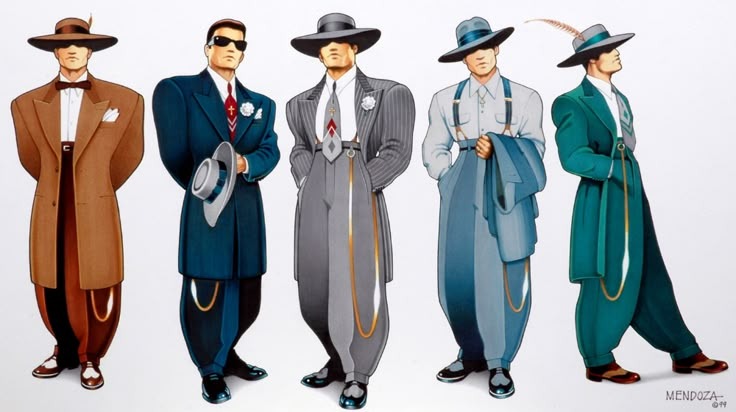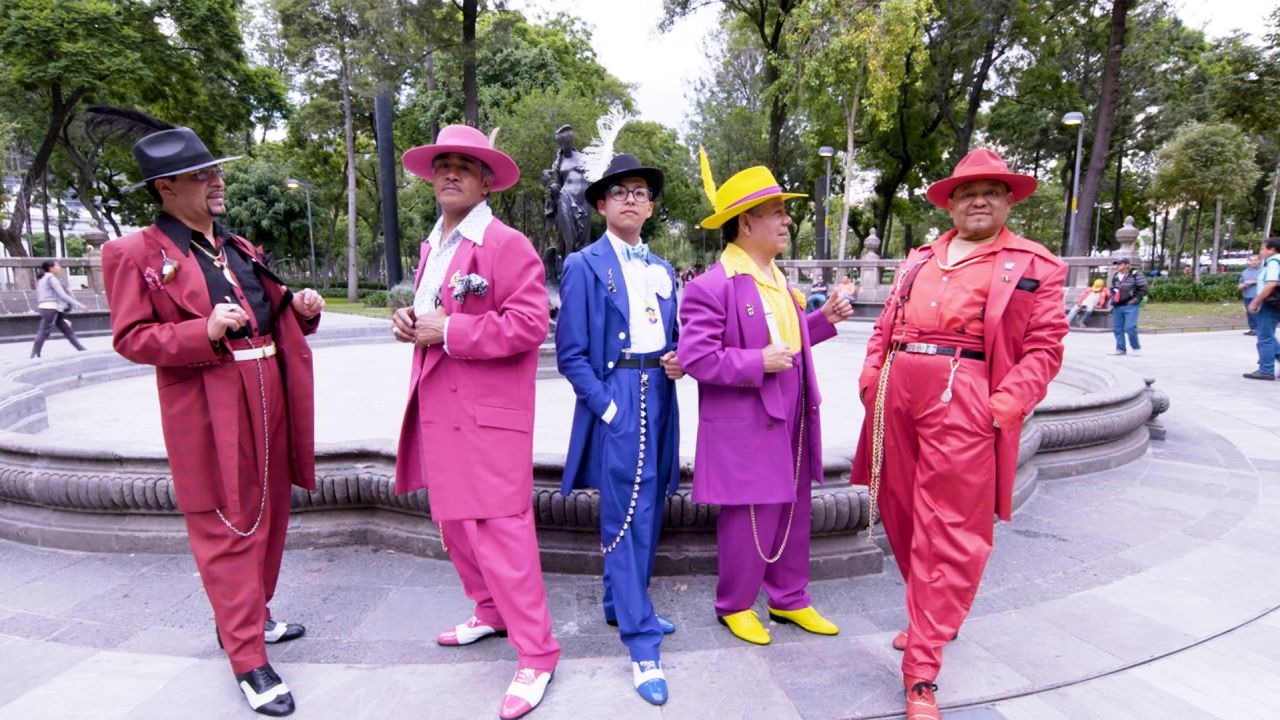The zoot suit stands as one of the most distinctive fashion statements in American history. This bold ensemble captured the spirit of rebellion and cultural identity during the 1930s and 1940s. Fashion enthusiasts and history buffs alike continue to admire this iconic style today. The Bold Collection celebrates such timeless fashion pieces that have shaped cultural movements throughout history.
The zoot suit represented more than just clothing. It became a symbol of defiance against conventional dress codes and social expectations. Young men from various communities embraced this dramatic style during a pivotal time in American society. Understanding what is a zoot suit requires exploring its unique design elements and cultural significance. The suit’s oversized proportions and distinctive features made it instantly recognizable on city streets across America.
The Distinctive Design Elements
The zoot suit featured several unmistakable characteristics that set it apart from traditional menswear. The jacket extended well below the waist, often reaching the knees or even lower. Additionally, the shoulders were heavily padded, creating an exaggerated silhouette that commanded attention. The sleeves tapered dramatically toward the wrists, adding to the suit’s unique proportions.
The trousers complemented the jacket’s bold design perfectly. They sat high on the waist and featured an extremely wide cut through the thighs and knees. However, the pants tapered sharply at the ankles, creating a distinctive balloon-like shape. This dramatic contrast between the wide upper portion and narrow bottom became a defining feature of the style.
Furthermore, the complete ensemble included several essential accessories. A long watch chain typically hung from the waist, swaying with each step. Wide-brimmed hats and pointed shoes completed the look. These accessories enhanced the suit’s dramatic appearance and contributed to its rebellious image.
Historical Context and Origins
The zoot suit emerged during the late 1930s in African American and Latino communities. Jazz clubs and dance halls provided the perfect backdrop for this flamboyant style. Young men wanted clothing that reflected their vibrant lifestyle and musical preferences. Therefore, traditional suits seemed too conservative for their expressive needs.
The style gained popularity rapidly throughout the early 1940s. Mexican American communities, particularly in Los Angeles, embraced the zoot suit enthusiastically. Additionally, African American communities in Harlem and other urban centers adopted the fashion. The suit became closely associated with swing music, jazz culture, and youth rebellion.
However, the zoot suit’s popularity occurred during World War II, creating significant controversy. The government rationed fabric for the war effort, making the suit’s excessive material use seem unpatriotic. This tension between fashion and wartime priorities contributed to social conflicts that would later escalate dramatically.
Cultural Significance and Social Impact
The zoot suit carried deep cultural meaning beyond its striking appearance. For many young men, wearing the suit represented pride in their identity and community. It challenged mainstream fashion norms and expressed individuality during a conformist era. Additionally, the suit became a form of cultural resistance against discrimination and marginalization.
The fashion choice also reflected economic aspirations within marginalized communities. Despite facing limited opportunities, young men invested in these expensive, custom-tailored suits. This decision demonstrated their desire to project success and dignity through their appearance. Furthermore, the suit’s bold design demanded respect and attention from observers.
The style also fostered community bonds among its wearers. Men who wore zoot suits often gathered in specific neighborhoods, clubs, and social venues. These gatherings strengthened cultural connections and provided spaces for self-expression. Therefore, the suit became a unifying symbol for various minority communities during challenging times.

The Zoot Suit Riots and Controversy
The zoot suit’s prominence led to significant social tensions during the summer of 1943. Los Angeles experienced several nights of violence known as the Zoot Suit Riots. Servicemen and civilians attacked young men wearing the suits, claiming they were unpatriotic and criminal. However, these attacks were largely motivated by racial prejudice and cultural misunderstanding.
The riots spread beyond Los Angeles to other cities across the United States. Media coverage often portrayed zoot suit wearers negatively, reinforcing harmful stereotypes. Additionally, some city governments banned the suits temporarily, claiming they caused social disruption. These actions highlighted the deep-seated tensions between different cultural groups during wartime.
The controversy surrounding the zoot suit revealed broader issues of racism and discrimination in American society. Young men faced harassment and violence simply for their fashion choices and cultural identity. Therefore, the riots became a significant moment in civil rights history, demonstrating the power of clothing as a form of cultural expression.
Modern Legacy and Influence
Today, the zoot suit continues to influence fashion and popular culture. Designers regularly reference its dramatic proportions and bold aesthetic in contemporary collections. Additionally, the suit appears frequently in films, television shows, and theatrical productions set in the 1940s. These appearances help preserve the suit’s cultural memory for new generations.
The zoot suit also maintains significance within Latino and African American communities. Cultural celebrations and historical commemorations often feature the iconic style. Furthermore, some fashion enthusiasts collect vintage zoot suits or commission modern reproductions. This ongoing interest demonstrates the suit’s enduring appeal and historical importance.
Musicians and performers continue to embrace the zoot suit’s rebellious spirit. Jazz musicians, swing dancers, and other artists wear variations of the style during performances. Therefore, the suit remains connected to its musical roots while adapting to contemporary contexts.
Read More Also: Spring Wedding Guest Style: What to Wear to Celebrate in Bloom
Conclusion
The zoot suit represents far more than a fashion trend from the 1940s. It embodies themes of cultural identity, rebellion, and self-expression that remain relevant today. Understanding what is a zoot suit means recognizing its role in challenging social norms and celebrating community pride. The suit’s dramatic design elements created an unmistakable silhouette that commanded attention and respect.
Additionally, the controversy surrounding the zoot suit highlighted important social issues that continue to resonate. The riots of 1943 demonstrated how clothing choices could become flashpoints for broader cultural tensions. However, the suit’s legacy transcends these conflicts, representing resilience and cultural pride.
Furthermore, the zoot suit’s influence on modern fashion and culture proves its lasting significance. From contemporary designers to cultural celebrations, the suit continues to inspire and educate. Therefore, this iconic fashion statement remains an important part of American cultural history, deserving recognition and understanding for future generations.
Read More Also: What You’ll Need: Your Shrinky Dink Earring Toolkit
Frequently Asked Questions
What exactly is a zoot suit?
A zoot suit is an oversized men’s suit popular in the 1940s, featuring a long jacket with padded shoulders and high-waisted, wide-legged trousers that taper at the ankles. The style was characterized by its dramatic proportions and was often accessorized with a long watch chain, wide-brimmed hat, and pointed shoes.
Who typically wore zoot suits?
Zoot suits were primarily worn by young African American and Mexican American men during the 1940s. The style was popular in urban areas, particularly in jazz clubs and dance halls, where it became associated with swing music culture and youth rebellion.
Why were zoot suits controversial during World War II?
Zoot suits became controversial because they used excessive amounts of fabric during wartime rationing. Many people viewed wearing them as unpatriotic since fabric was needed for military uniforms. This tension contributed to the Zoot Suit Riots of 1943.
What happened during the Zoot Suit Riots?
The Zoot Suit Riots occurred in Los Angeles during the summer of 1943, when servicemen and civilians attacked young men wearing zoot suits. The violence spread to other cities and was largely motivated by racial prejudice and cultural misunderstanding rather than actual criminal behavior.
Are zoot suits still worn today?
While not common in everyday wear, zoot suits are still worn for special occasions, cultural celebrations, theatrical performances, and by swing dancers and jazz musicians. Some fashion enthusiasts collect vintage suits or commission modern reproductions for historical accuracy or personal style.



